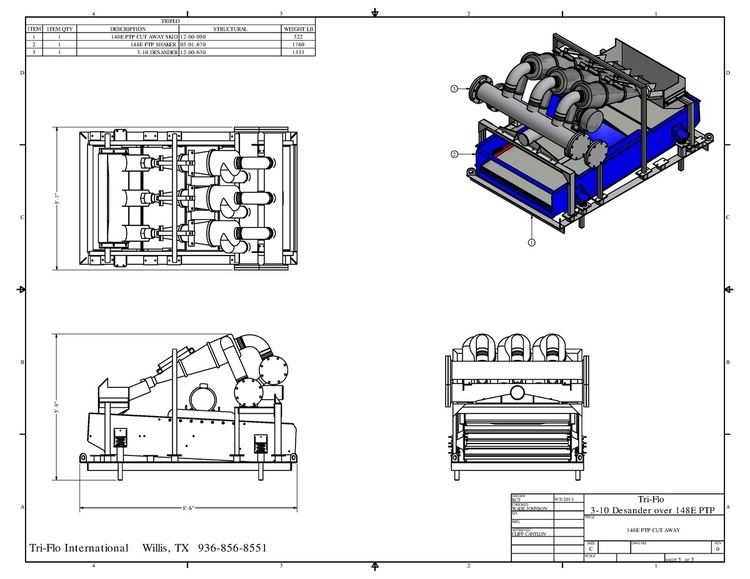 | ||
Desanders and desilters are solid control equipment with a set of hydrocyclones that separate sand and silt from the drilling fluids in drilling rigs. Desanders are installed on top of the mud tank following the shale shaker and the degasser, but before the desilter. Desander removes the abrasive solids from the drilling fluids which cannot be removed by shakers. Normally the solids diameter for desander to be separated would be 45~74μm, and 15~44μm for desilter.
A centrifugal pump is used to pump the drilling fluids from mud tank into the set of hydrocyclones.
Solids control
Desanders have no moving parts. The larger the internal diameter of the desander is, the greater the amount of drilling fluids it is able to process and the larger the size of the solids removed. A desander with a (10 inches (250 mm) cone) is able to remove 50% of solids within the 40-50 μm (micrometre) range at a flow rate of 500 US gallons per minute (32 L/s), whilea desilter (4 inches (100 mm) Cone) is able to remove 50% of solids within the 15-20 μm range at a flow rate of 60 US gallons per minute (3.8 L/s). Micro-fine separators are able to remove 50% of solids within the 10-15 μm range at a flow rate of 15 US gallons per minute (0.95 L/s). A desander is typically positioned next-to-last in the arrangement of solids control equipment, with a desander centrifuge as the subsequent processing unit. Desanders are preceded by gas busters, gumbo removal equipment (if utilized), shale shaker, mud cleaner (if utilized) and a vacuum degasser. Desanders are widely used in oilfield drilling. Practice has proved that hydrocyclone desanders are economic and effective equipment.
